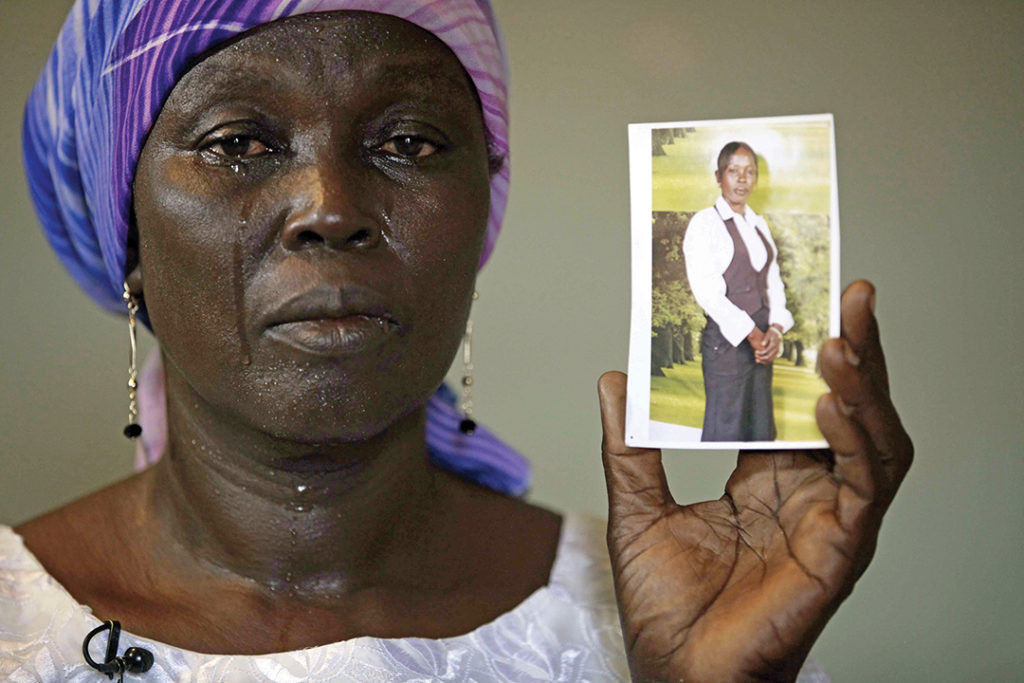ADF STAFF
As Boko Haram saw its territorial gains recede in the face of military operations, the Islamic insurgent group began to turn to asymmetric tactics, namely suicide bombers. That, in itself, is not particularly unusual for terrorists.
Using women and children is.
Jason Warner and Hilary Matfess of the Combating Terrorism Center at West Point wrote about this tactic in “Exploding Stereotypes: The Unexpected Operational and Demographic Characteristics of Boko Haram’s Suicide Bombers.” Their study shows that from April 11, 2011, to June 30, 2017, Boko Haram sent 434 bombers to 247 targets in 238 separate attacks.
Of these bombers, at least 56 percent were women, and at least 81 were found to be teenagers or children. “Boko Haram has deployed not only more total female bombers than any other terrorist group in history, but more female suicide bombers as a percentage of its overall suicide bombing cadre than any other group,” Warner and Matfess wrote.
The preference for girls over boys is about 4-to-1. Of the 81 child or teen bombers, 23 were girls and 42 were teen girls, the study shows. This compares with five boys and 11 teen boys.
The New York Times interviewed 18 girls for an October 2017 report on the use of young girls as suicide bombers. The girls told of how fighters strapped bombs onto them and directed them toward crowds in markets, bus stops, camps and other soft targets. The insidious intent of the tactic cannot be overstated. “Exploding Stereotypes” suggests that as Boko Haram pioneers the use of children as suicide bombers, especially girls, they have been “surprisingly effective, outstripping the casualty rate of their adult counterparts.”
Boko Haram began using female suicide bombers in 2014, three years after its first suicide bomber, and it used 244 women up through the first half of 2017. That’s more female suicide bombers than any other insurgent group in history. The next-highest number was 44, used by the Tamil Tigers of Sri Lanka over 10 years, Warner and Matfess wrote.
 “Exploding Stereotypes” indicates that the kidnapping of the Chibok schoolgirls, and the attendant global notoriety that accompanied the abductions, may have shown that female suicide bombers offer “distinct advantages over males.”
“Exploding Stereotypes” indicates that the kidnapping of the Chibok schoolgirls, and the attendant global notoriety that accompanied the abductions, may have shown that female suicide bombers offer “distinct advantages over males.”
At 56.2 percent, females comprise a higher percentage of Boko Haram’s total number of suicide bombers, and that number appears to be rising. In the first half of 2017, nearly two-thirds of bombers for whom gender was known were female, according to the study. Females also are more likely to be sent to civilian targets.
The use of children and teens serves a couple of purposes. First, youths typically are more difficult to detect and can penetrate secure areas more easily. Also, their use as suicide bombers serves as a signal of Boko Haram’s seriousness and potential brutality, the report states.
Warner and Matfess’ study included three female child suicide bombers as young as 7. Two of the girls blew themselves up in a Nigerian market in Maiduguri in December 2016, killing one other person and injuring at least 17, according to the Evening Standard. Earlier, another 7-year-old girl killed five and injured 19 in a Potiskum, Nigeria, market in February 2015, according to the Daily Mail.
The report found that young suicide bombers were somewhat more effective than Boko Haram’s average, which is 9.4 casualties per attack. “When deployed singularly, they are most effective, at 11.3 casualties per bomber,” the report states. “However, their rates of failure are also high. Nevertheless, young bombers, when dispatched together, may be especially lethal, likely partially because of their ability to encourage each other to detonate.”
A December 2016 Reuters report demonstrates the lethality that young suicide bombers can cause. Two schoolgirls killed 56 and wounded 57 in an attack on a market in the northeastern Nigerian town of Madagali.
The combination of paired attacks, young and female bombers and the targeting of civilian spaces give Boko Haram the opportunity to become even more lethal. Warner and Matfess wrote that Boko Haram suicide bombings have evolved through four phases, ending up in a period that began in January 2016 and continued through May 2017. In that time, the percentage of bombings involving women or youths increased from about 60 percent to nearly 68 percent.
Security forces must expect Boko Haram to continue to adapt suicide bombing tactics to the operational environment. Counter-messaging to prevent bombings may help, including informing communities of the civilian — and Muslim — toll that suicide bombings inflict, the report states. Security and community officials also could provide an “in-the-moment off-ramp” to those drafted as bombers, showing them a path to defection. Doing so would help communities recognize a potential bomber and give options to those who may have signed on to Boko Haram for nonideological reasons.

